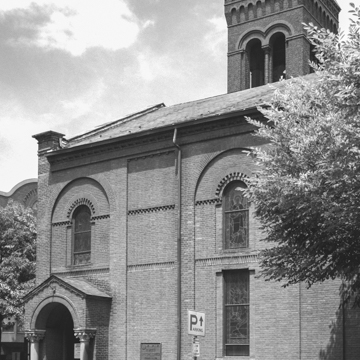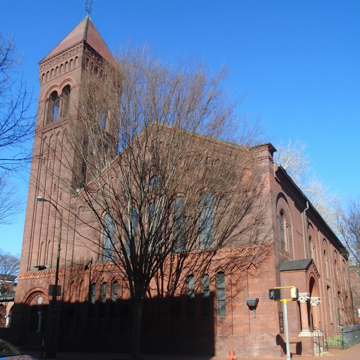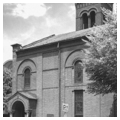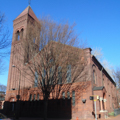The odd proportions of St. James’ church are a carryover from the underlying colonial building that Burns enlarged beginning in 1871 with the addition of a robustly detailed brick apse; two decades later he wrapped the church in an Italian Romanesque mantle. In the early twentieth century, spectacular Mercer tile floors were added, perhaps under the supervision of C. Emlen Urban, who designed the handsome adjacent Colonial Revival St. James’ house in 1903.
You are here
St. James’ Episcopal Church
If SAH Archipedia has been useful to you, please consider supporting it.
SAH Archipedia tells the story of the United States through its buildings, landscapes, and cities. This freely available resource empowers the public with authoritative knowledge that deepens their understanding and appreciation of the built environment. But the Society of Architectural Historians, which created SAH Archipedia with University of Virginia Press, needs your support to maintain the high-caliber research, writing, photography, cartography, editing, design, and programming that make SAH Archipedia a trusted online resource available to all who value the history of place, heritage tourism, and learning.












